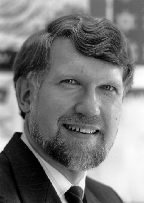

| Ivars Peterson's MathTrek |
January 5, 1998
The ruins of ancient Corinth, situated in rugged terrain connecting central Greece with the Peloponnesus, include a stadium that featured several courses for foot races. In 1980, archaeologists found and excavated the curved starting line for one such racecourse, dating from about 500 B.C.
Curved to allow a staggered start, the starting line was constructed of limestone blocks embedded in the ground and covered with a thin plaster coat. Its excavated length, along the arc of a circle, was about 12 meters, and its width varied between 1.25 and 1.30 m. Sets of front and rear toe grooves cut into the blocks marked the 12 starting positions for the runners.

The excavated remains of a curved starting line for a stadium racecourse in Corinth, Greece, constructed around 500 B.C. (Courtesy of the Corinth Excavations, American School of Classical Studies in Athens.)
Determining the radius and center of the circle defining the starting line presents an interesting problem in geometry. Moreover, such information suggests how race tracks were laid out in ancient Greece and provides insights into the units of length and angle used by the Greeks.
Mathematician Chris Rorres of Drexel University in Philadelphia and David Gilman Romano of the University of Pennsylvania Museum of Archaeology and Anthropology describe the results of their calculations and analysis in the current issue of SIAM Review.
Archaeologists surveyed the starting line, measuring the locations of 21 points along its front edge. "Of course, it is not possible to fit a circle exactly through these 21 points due to many cumulative errors," Rorres and Romano note. "These include errors made by the original surveyors in laying out the starting line, errors made by the stonecutters and builders of the starting line, shifting of the starting line over 2.5 millennia, errors in locating points to measure due to erosion and other damage along the edge, and errors in the measuring instruments."

Diagram of the Corinth curved starting line, with 21 data points marked along its front edge.
The archaeologists proceeded on the basis of the fact that three points define a circle. They determined the exact circles that pass through 680 triplets of the 21 data points. The x and y coordinates of these trial circles were then averaged to provide the coordinates of the center of the "true" circle. Its radius turned out to be 56.242 m.
Rorres and Romano took a slightly different approach, using a method that involved finding the best circle that fits all 21 data points. The resulting circle is the one for which the sums of the squares of the distances of the data points to the circle is a minimum.
Their calculations yielded a circle with a somewhat different center and a radius of 53.96 m., smaller than that computed by the archaeologists. That's a significant difference for someone seeking physical evidence of the circle's center in the stadium, Rorres and Romano remark. Indeed, their analysis shows that the three-points method overestimates the true radius.
By measuring the locations of 11 of the front toe grooves (the condition of one groove was too poor to allow an accurate measurement), it was also possible to calculate the angles between the starting positions with respect to the starting-line circle. The average angle between the 12 positions turned out to be 1.019 degrees.
"Although the range of angles is rather large, this average angle is sufficiently close to one degree to warrant attention," Rorres and Romano contend.
Early Greek scholars adopted the Babylonian practice of dividing the 12 signs of the zodiac into 30 equal parts. The choice of 30 probably reflects the observation that it takes roughly 30 days for the sun to pass through each sign, and the division of a circle into 360 parts can probably be traced to the fact that there are about 360 days in a year.
"It may be that in laying out the starting positions, the Corinthians used the angle traveled by the sun along the zodiac in one day as the angle allotted each runner," the researchers conclude. "If so, the Corinthian starting line is evidence of an early use of the degree as a unit of angular measurement among the Greeks."
References:
Rorres, Chris, and David G. Romano. 1997. Finding the center of a circular starting line in an ancient Greek stadium. SIAM Review 39(December):745-754. Available at http://www.siam.org/journals/sirev/39-4/30572.html or http://www.mcs.drexel.edu/~crorres/Corinth/Stadium.html.
You can also check out the home page of Chris Rorres, which points you toward a fascinating collection of material about Archimedes: http://www.mcs.drexel.edu/~crorres/.
Copyright 1998 by Ivars Peterson
Comments are welcome. Please send messages to Ivars Peterson at mailto:ip@sciserv.org
Ivars Peterson is the mathematics and physics writer and online editor at Science News (http://www.sciencenews.org/). He is the author of The Mathematical Tourist, Islands of Truth, Newton's Clock, Fatal Defect, and *The Jungles of Randomness: A Mathematical Safari. His current works in progress are an updated, 10th anniversary edition of The Mathematical Tourist (to be published in 1998 by W.H. Freeman) and Fragments of Infinity: A Kaleidoscope of Mathematics and Art (to be published in 1999 by Wiley).
NOW AVAILABLE The Jungles of Randomness: A Mathematical Safari by Ivars Peterson. New York: Wiley, 1997. ISBN 0-471-16449-6. $24.95 US.